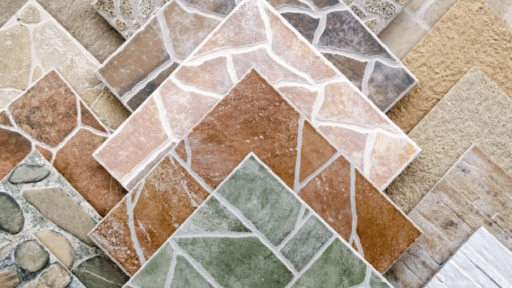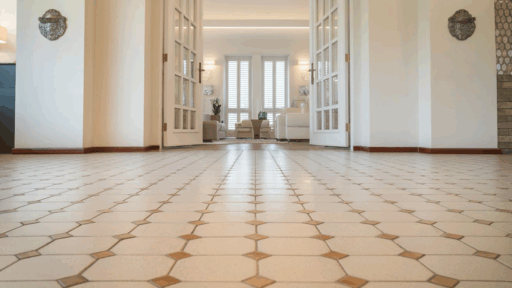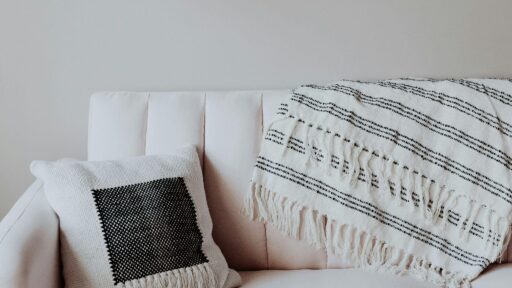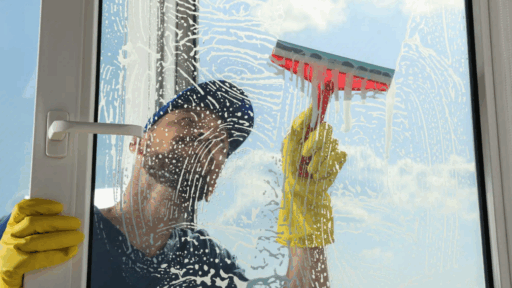If you’re planning a bathroom makeover or redoing your patio, you might be wondering: Is porcelain tile slippery?
I get this question a lot, and you’re not alone. It’s a common concern when choosing tile for wet or high-traffic areas.
Porcelain tile is renowned for its strength, style, and ease of cleaning.
But when water comes into play, safety is key. Slips and falls are no joke, especially in spots like bathrooms, kitchens, or outdoor walkways.
In this post, I’ll break it all down in plain, simple terms.
You’ll learn what really makes a tile slippery, where porcelain tiles are safe to use, what myths to ignore, and a few helpful tips to stay safe and stylish.
What Is Porcelain Tile?

Porcelain tile is a type of ceramic tile, but it’s made from finer, denser clay and fired at much higher temperatures.
This special process makes porcelain tile much stronger and more durable than regular ceramic tiles.
One of its biggest benefits is that it’s less porous, meaning it doesn’t absorb much water.
This makes it a great choice for places where moisture is common, like bathrooms, kitchens, laundry rooms, and even outdoor spaces.
Porcelain tiles are also very resistant to stains, scratches, and fading, which makes them easy to clean and ideal for high-traffic areas.
They come in a wide variety of styles, colors, and finishes.
Some are designed to mimic natural materials, such as wood, marble, or stone, providing a stylish look without the added maintenance.
Others have sleek, polished finishes for a more modern feel. Because of their durability and good looks, porcelain tiles are used in homes, offices, patios, and even commercial spaces.
Is Porcelain Tile Slippery?
Porcelain tile can be slippery, especially when it has a polished or glossy finish.
These smooth surfaces offer little grip under your feet, which can make walking on them hazardous when they’re wet.
That’s why glossy porcelain tile isn’t a good choice for bathrooms, kitchens, or poolside areas where water is common.
Water tends to stay on the surface of these tiles, creating a slick layer that increases the risk of slipping.
However, not all porcelain tiles are the same. Many are made with matte finishes or textured surfaces that help reduce slipperiness.
Some even have built-in anti-slip coatings designed specifically for safety in wet areas.
If you’re choosing tile for a space where moisture is likely, it’s essential to select a style labeled as slip-resistant. With the right finish, porcelain tile can be both beautiful and safe.
Factors Contributing to Slipperiness
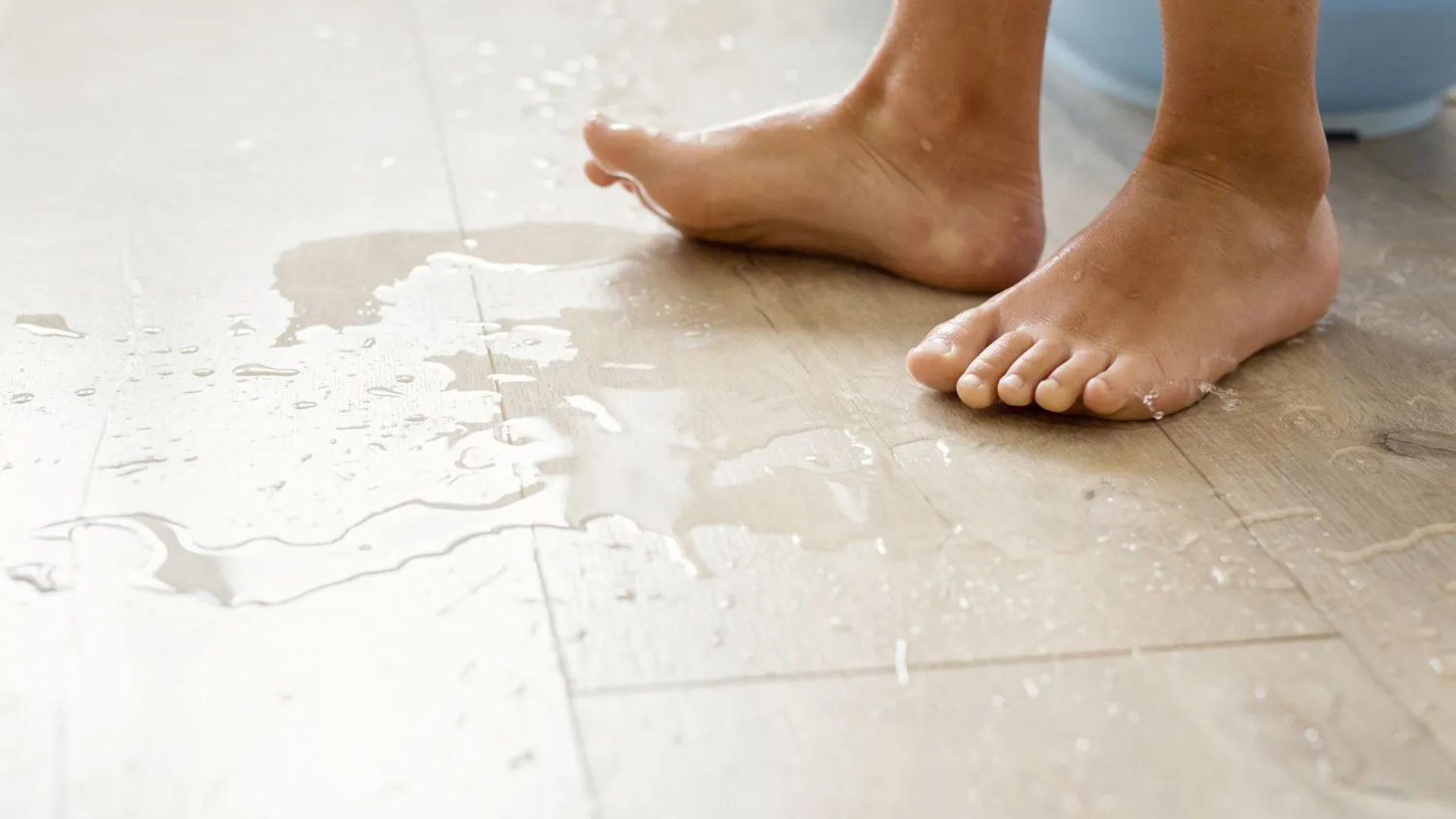
Several things can affect how slippery porcelain tile feels underfoot. It’s not just about water, surface texture, footwear, tile size, and even cleaning habits, all play a role.
1. Surface Finish
The surface finish of porcelain tile plays a big role in how slippery it is. Polished or glossy porcelain tiles have a very smooth top layer that reflects light and feels slick to the touch.
This kind of finish can become very slippery when wet because there’s no texture to help your feet grip the floor.
In contrast, matte or textured finishes offer more traction, making them a safer option for wet areas like bathrooms or entryways.
2. Presence of Water or Moisture
Water is one of the biggest causes of slipperiness on any hard flooring, including porcelain tile.
When water or moisture is present, whether from a shower, spilled drink, or wet shoes, it reduces friction between your feet and the tile surface.
This makes slipping much more likely, especially if the tile is smooth. That’s why it’s important to dry wet spots quickly and use slip-resistant tiles in moisture-prone spaces.
3. Type of Footwear
The type of footwear you use can also affect how slippery porcelain tile feels.
Socks, smooth-soled shoes, or bare feet may not have enough grip on slick tile surfaces, especially polished ones.
On the other hand, rubber-soled shoes or slippers with good tread can help prevent slipping.
If you often walk barefoot at home, choosing a tile with more texture can help make the floor safer.
4. Tile Size and Grout Lines
Larger porcelain tiles have fewer grout lines, which means more smoother surface area.
This can increase slipperiness because grout lines actually provide some grip and help break up water on the surface.
Smaller tiles, or tiles with wider grout lines, can offer a little more traction. So, the size and layout of the tile can also impact how slippery the floor feels when wet.
5. Cleaning Products and Residue
Sometimes, cleaning products can leave a film or residue on porcelain tile that makes it more slippery.
Wax-based cleaners or heavy-duty floor polishes can create a slick surface, even on matte tiles.
It’s important to use cleaners recommended for porcelain tile and rinse them off thoroughly.
Keeping your tile clean but free of residue helps maintain its natural grip and reduces the risk of slipping.
Porcelain Tile in Bathrooms: Slippery or Safe?
Bathrooms are often wet, so choosing the right flooring is crucial for safety. This is what you need to know about porcelain tile in bathroom spaces:
- Polished Porcelain Is Slippery When Wet: These have a shiny, smooth finish that looks great but can be very slick, especially on bathroom floors.
- Matte or Textured Porcelain Is Safer: These finishes offer more grip, helping reduce slips in wet areas. They’re better suited for bathroom floors.
- Look for Anti-Slip or COF Ratings: Tiles with higher COF (coefficient of friction) ratings offer better traction. Always check this when shopping for bathroom tile.
- Glossy Tiles Are Fine for Walls: Since walls aren’t walked on, polished tiles are safe to use there. They can add shine and style without any safety risk.
Bottom Line: If you’re tiling your bathroom, choose matte or textured porcelain for floors and save the glossy tiles for the walls. That way, you get the best of both style and safety.
Outdoor Use: Is Porcelain Tile Slippery Outside?
Outdoor areas, such as patios, pool decks, and walkways, require safe, slip-resistant surfaces, especially when water is present.
- Smooth porcelain tiles can be slippery when wet: Rain, pool water, or even morning dew can make glossy surfaces dangerous underfoot.
- Look for outdoor-rated porcelain tiles: These are designed with textured or “grip” finishes to improve traction in wet conditions.
- Check for a COF rating of 0.60 or higher: A higher COF (coefficient of friction) means better slip resistance and a safer walking surface.
- Choose frost-resistant tiles in colder climates: Wet surfaces can freeze, making them more slippery. Frost-rated tiles also resist cracking in freeze-thaw cycles.
- Proper installation is key: Using the right tile and installing it correctly ensures your outdoor space is both stylish and safe.
Bottom Line: To stay safe and avoid slips, choose textured, slip-resistant, and frost-rated porcelain tiles for outdoor use. With smart planning, your outdoor area can be both functional and beautiful.
Comparing Porcelain Tile to Other Floor Types
Porcelain tile is just one of many flooring options, and each type behaves differently when wet.
Understanding how porcelain compares to materials like vinyl, stone, laminate, or ceramic can help you make a smarter, safer choice, especially for spaces where moisture is common.
| Flooring Type | Is It Slippery When Wet? | Notes |
|---|---|---|
| Polished Porcelain | Yes, very | Avoid wet areas |
| Matte Porcelain | Less slippery | Good for bathrooms and kitchens |
| Vinyl Flooring | Less slippery | Softer underfoot, great for families |
| Natural Stone | Depends on the finish | Some types can be very slick |
| Laminate | Can be slippery | Not good around water |
| Ceramic Tile | Similar to porcelain | Less durable but also slippery when wet |
What Makes a Porcelain Tile Less Slippery?

Not all porcelain tiles are equally slippery. Certain finishes and features can make some tiles much safer than others, especially in areas where floors often get wet.
1. The COF Rating
The COF, or coefficient of friction, tells you how much grip a tile has. It’s one of the most important indicators of how slippery a tile will be.
A COF below 0.50 means the tile is quite slippery when wet and should be avoided in wet areas.
A COF between 0.50 and 0.59 offers a fair grip and is okay for dry, light-use spaces.
The safest option is a COF of 0.60 or higher, which is considered slip-resistant and is ideal for bathrooms, kitchens, and outdoor areas.
You can usually find the COF rating on the tile box or in the product details.
2. Matte and Textured Finishes
Porcelain tiles with a matte finish have a soft, flat surface that provides more grip than shiny or polished tiles. They are a smart choice for areas where slipping is a concern.
Textured tiles go further by adding a slight pattern or raised surface that helps your feet stay steady.
These textures are not just functional, they’re also stylish, often mimicking materials like stone, wood, or concrete.
Using matte or textured finishes is one of the easiest ways to make porcelain tile less slippery.
3. Grip-Treated or Anti-Slip Tiles
Some porcelain tiles are specially manufactured with grip-treated or anti-slip surfaces. These tiles are designed for safety and are ideal for areas that frequently get wet.
You’ll often find them labeled for use in bathrooms, mudrooms, entryways, and poolside areas.
These tiles may feel slightly rougher than others, but the added traction is well worth it.
Anti-slip tiles are a reliable solution if you want a durable floor that also helps prevent accidents in wet conditions.
Common Myths About Porcelain Tiles
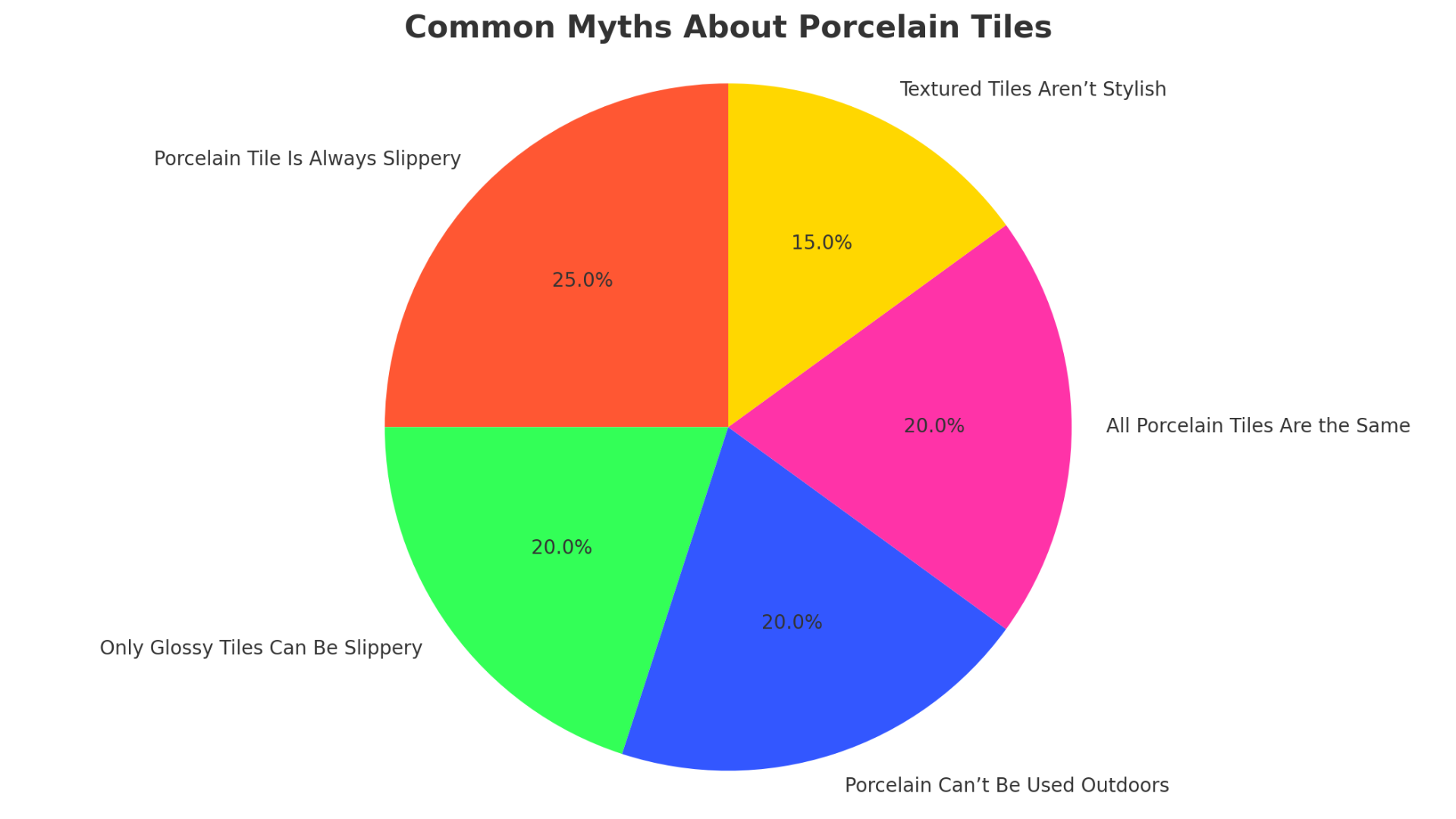
Many people have misunderstandings about porcelain tile that can lead to poor choices or missed opportunities.
- Myth: Porcelain tile is always slippery
Truth: Only polished porcelain is slippery when wet; matte and textured options offer good traction. - Myth: Only glossy tiles can be slippery
Truth: Any tile can become slippery if wet or coated in residue, even matte finishes. - Myth: Porcelain can’t be used outdoors
Truth: Outdoor-rated porcelain tiles are textured and frost-resistant, perfect for patios and walkways. - Myth: All porcelain tiles are the same
Truth: Porcelain tiles vary by finish, texture, use (floor vs. wall), and slip resistance. - Myth: Textured tiles aren’t stylish
Truth: Textured porcelain tiles come in modern, rustic, and natural looks and can be very stylish.
Tips to Make Porcelain Tile Less Slippery
Even if porcelain tile is smooth or polished, there are easy ways to improve safety. These tips can help reduce slipping, especially in areas that often get wet, like bathrooms, kitchens, or entryways.
- Use non-slip rugs or mats in bathrooms, kitchens, entryways, and near patio doors.
- Choose mats with non-slip backing to keep them from sliding or bunching.
- Wipe up water spills as soon as possible to prevent slick spots.
- Keep a mop or towel handy in areas prone to moisture.
- Apply anti-slip sprays or coatings made for tile floors.
- Use anti-slip products on polished tiles to create more grip without changing the tile’s appearance.
- Avoid waxy or oily cleaners that leave slippery residues.
- Consider smaller tiles with more grout lines for extra grip.
Should You Avoid Porcelain Tile Altogether?
No, not at all. Porcelain tile is a great flooring choice. It’s strong, stylish, water-resistant, and long-lasting, which makes it suitable for many parts of the home.
The key is to choose the right finish and install it in the appropriate location. Avoid high-gloss porcelain in areas where floors may get wet, like bathrooms or near entryways.
Instead, go for matte or textured finishes that provide more grip and are safer to walk on.
Porcelain tile also works beautifully on walls, fireplaces, and backsplashes, where slipperiness isn’t a concern.
It’s easy to clean, holds up well over time, and comes in a wide variety of designs, from modern to rustic.
With the right type and proper placement, porcelain tile can be both a safe and stylish addition to any home.
Final Thoughts
Yes, porcelain tile can be slippery, but it doesn’t have to be. With the right type of finish and proper use, porcelain tile can be both safe and beautiful.
For bathrooms, kitchens, and outdoor spaces, choose matte or textured porcelain.
Check for a COF rating of 0.60 or higher and use rugs or coatings as extra protection. Avoid glossy tiles where water is common.
In my own home, switching from shiny to matte porcelain tiles made a huge difference in both safety and comfort. It’s all about using the right product for the right place.
If you’re shopping for new floors, take your time and ask the right questions. You’ve got this, and your home will thank you.
Leave a comment below or send me a message, I’d love to hear what space you’re working on and offer a few simple suggestions.

